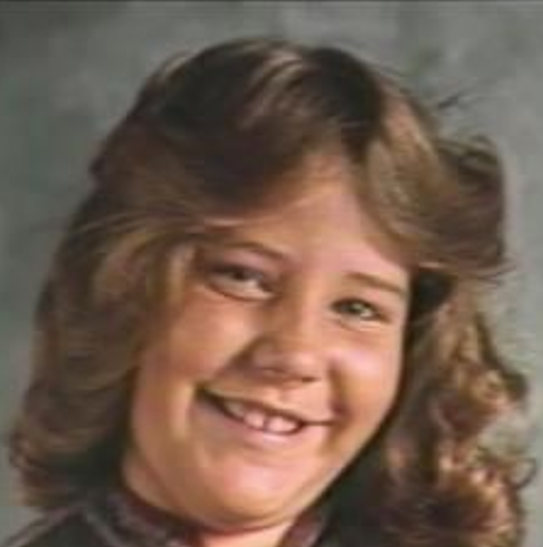
Truth After 42 Years
 Quick Facts:
Quick Facts:
- On February 21, 1982, Daralyn Johnson, age nine, was abducted, raped, and killed. Her body was found three days later.
- Later 1982, Charles Fain was arrested for her rape and murder based on a now-considered-faulty hair-analysis process. In 2001, his hair was reexamined by mitochondrial DNA analysis. He was not a match, and was released and exonerated.
- In 2018, scientists developed a new technology to get a genetic profile from a hair, even one without a root as in this case. They got a full profile, used genetic genealogy, and focused in on David Dalrymple.
- At about the same time, clothing evidence was sampled by the M-Vac and a profile was obtained. It matched the profile obtained by the new hair-sample process. This gave added strength to both relatively new technologies in court.
- A 2020 DNA sample from Dalrymple matched both the profiles from the evidence.
- Dalrymple was tried in June 2024 and sentenced in September of the same year.
Story Synopsis:
On February 21, 1982, Daralyn Johnson, only nine years old at the time, left home to walk to school, but never made it there. Fortunately it only took three days to find her body, but she had been sexually assaulted, beaten, and left in a ditch where she had eventually died by drowning.
Later that year a man named Charles Fain, a neighbor of the Johnsons, was arrested for her rape and murder. Unfortunately, his guilt was based on microscopic visual comparison, a process where his voluntarily-given hair sample was compared to hairs found on her clothing. This process is no longer deemed acceptable, but Mr. Fain got a life sentence and served for more than 17 years before DNA technology improved. In 2001, his hair was compared by mitochondrial DNA analysis, which proved he did not match the suspect hairs. He was released and exonerated.
This left investigators almost back at the beginning, with no valid suspect. Over the next couple of decades as DNA technology evolved, many tests were run to try to solve the case. Greg Hampikian, of the Idaho Innocence Project, was involved in trying to find the profile. In about 2018 he worked with a colleague at University of California-Santa Cruz, Ed Green, who developed a new technology to get a genetic profile from a hair, even one without a root as in this case. Hampikian says of this process, "The idea was to take the DNA left of the pubic hair left on the child, you treat it like ancient DNA and you get enough information of, what we call, single nucleotide polymorphism - the kind of DNA 23andMe use for their data..." This brand new process allowed them to get a full profile off of the hair. Then, using genetic genealogy, they narrowed down their suspect search to a family in Nampa. Several siblings were eliminated as suspects, and David Dalrymple alone became the focus of the investigation. Research showed that David actually lived in Nampa at the time of the crime, and his home would have been on the path Daralyn took to walk to school.
At about the same time, Mark Taylor, a detective on the case, took the clothing evidence from the case to be sampled by M-Vac™ expert Francine Bardole in West Jordan, Utah. Since the clothing had been in a ditch, there was a lot of sand and debris still embedded. It took multiple filters to process the samples, but a profile was obtained, which later matched to Dalrymple. The fact that the profile obtained by the M-Vac™ matched the profile obtained by the new hair-sample process gave added strength to both relatively new DNA technologies in court. They helped verify each other and eventually helped convict Dalrymple.
The next year, a DNA sample was obtained from Dalrymple's brother and sent to the lab in California, which helped them create a full profile for comparison. In 2020 they obtained a swab from Dalrymple himself under court order. They were able to determine that there was an identical DNA match for both the hairs left at the scene and the touch DNA obtained from the clothing.
Dalrymple was tried in June 2024 and found guilty of the 1982 rape and first-degree murder of Daralyn Johnson. He was sentenced in September 2024 to two consecutive terms of life in prison without the possibility of parole. He was already serving a 20-years-to-life sentence for a 2004 conviction which also involved lewd conduct and sexual abuse of a young minor in Ada County.
The judge called Dalrymple's crimes "heinous" and said that he was "remorseless" and "incapable of rehabilitation." He will serve out his life in prison and not be able to hurt or kill young girls again. The family and community can be grateful that those involved in the case cared enough to pursue new technologies and continue pushing until truth was finally found and justice served after 42 years.
If you would like a quote or if you have questions please click here.
Sources:
Canyon County Press Release, September 6, 2024
Idaho Press news story, September 6, 2024
KTVB7 news story - January 14, 2022